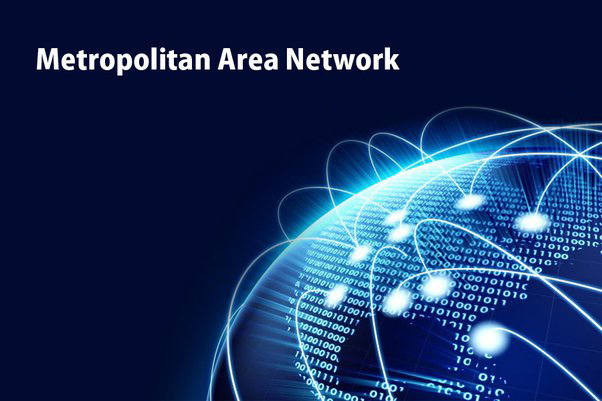What is a Metropolitan Area Network (MAN)?
There are many differing types of area networks available for networking purposes, with the metropolitan area network being among them. If you’re a novice to computer networking, it does help to know the differences between each computer network available. Metropolitan area networks are somewhat rarer to encounter for the common IT professional, but you interact with them on a daily basis. As with any new subject, there is a fair bit to explore and understand when it comes to MANs. This guide is meant to give useful and actionable information about MANs.
What is a Metropolitan Area Network (MAN)?
A metropolitan area network (MAN) is a computer network that connects computers within a metropolitan area, which could be a single large city, multiple cities and towns, or any given large area with multiple buildings. A MAN is larger than a local area network (LAN) but smaller than a wide area network (WAN). MANs do not have to be in urban areas; the term “metropolitan” implies the size of the network, not the demographics of the area that it serves.

Metropolitan Area Networks for Organizations
A metropolitan area network traditionally refers to a private data network used by a single organization in several buildings or by several organizations interconnected in the same geographic vicinity. It is larger than a LAN in a single building but not large enough to be considered a WAN. The size usually ranges from 5 kilometers to 50 km. If all the buildings are on a single piece of contiguous property, it may also be considered a campus network.
Generally, a MAN is small enough that dedicated point-to-point, or backbone, data connections are established between buildings or to a hosted colocation (colo) data center. These backbone connections can use a variety of link technologies, including Ethernet runs, leased Dark fiber or private fiber, point-to-point Wi-Fi, wireless LAN (WLAN), millimeter wave (MM wave) radio and microwave radio links, or private 5G networks. Public internet-routed links, such as through a virtual private network (VPN) or public cloud, would not be considered part of a MAN but may be included in a MAN diagram for simplicity. A well-designed system will have redundant links between locations.
A MAN may use a local exchange carrier (LEC) to provide the connections between LANs and may connect to an internet exchange point for high-speed communication between the MAN and the public internet. It may also connect to other vendors at a peer exchange or to cloud vendors, such as with Amazon Web Services (AWS) Direct Connect.
How are MAN networks constructed?
Like WANs, a MAN is made up of interconnected LANs. Because MANs are smaller, they are usually more efficient than WANs, since data does not have to travel over large distances. MANs typically combine the networks of multiple organizations, instead of being managed by a single organization.
Most MANs use fiber optic cables to form connections between LANs. Often a MAN will run on “dark fiber” — formerly unused fiber optic cables that are able to carry traffic. These fiber optic cables may be leased from private-sector Internet Service Providers (ISPs).
In some cases, this model is reversed: a city government builds and maintains a metropolitan fiber optic network, then leases dark fiber to private companies.
Advantages of MAN network
Some of the advantages of a Metropolitan Area Network are:
- It can send data in both directions at the same time.
- Metropolitan Area Network allows people to connect LANs.
- It is more comprehensive than a LAN and offers greater security than a WAN.
- Metropolitan Area Network usually encompasses several city blocks or an entire city.
- It improves data handling efficiency while increasing data transfer speed.
- It facilitates the cost-effective sharing of shared resources such as printers.
- It provides an excellent backbone for a vast network, thus increasing WAN access.
- The implementation cost of a Metropolitan Area Network is lower than WAN since it requires fewer resources.
Disadvantages of MAN network
Some of the disadvantages of a Metropolitan Area Network are:
- The data rate is slow in a Metropolitan Area Network compared to LAN.
- Compared to LAN, more cable is required to set up a Metropolitan Area Network.
- Because this network comprises multiple LANs, it is difficult to keep hackers out.
- These networks must be implemented by skilled technicians and network administrators.
- This network’s implementation and management costs are higher than those of a local area network.
- It is challenging to manage this network because it’s an extensive network of numerous local area networks.
- As skilled technicians and network administrators are needed to implement this network, the overall installation and management costs rise.

What sets a Metropolitan Area Network apart?
Plenty of network types exist, and most help devices link up if they are near one another. A Metropolitan Area Network is slightly different than others you’ve likely heard of before.
A MAN is often confused with:
- CAN. A campus-area network (or CAN) links all of the buildings on campus together. A CAN is a form of MAN, and for students, the connection is critical. Some 17 million students don’t have an internet connection at home. A CAN helps them stay in touch while on campus.
- LAN. A local area network (or LAN) is a collection of devices that are all connected in one location. Several LANs are pulled together to make up one MAN.
- WAN. A wide-area network (or WAN) is a connection of devices scattered across vast distances. A WAN is much larger than a MAN.
It’s easy to get confused by all the acronyms involved in computing. But know that a MAN does things these other networks can’t.
Conclusion
A metropolitan area network is just one of many types of area networks. It has a limited scope in which it can be effectively deployed, like any area network. That said, they do have a very specific utility. While they can be an expensive solution to a problem, MANs are highly performant networks. As with any area network, it really does boil down to the cost of the implementation. Building out any computer network is less a question of what the best-performing option is, and more a question of what the most cost-effective means of establishing interconnectivity might be. As such, metropolitan area networks are one of the rare implementations of an area network. They may have been the method of choice for communicating between businesses decades ago, but technology has advanced to the point where wide-area networks have largely replaced them in common usage.